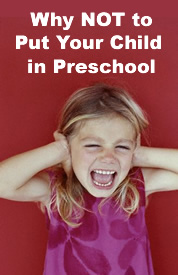Homepreschool 101: What Preschoolers Learn Through Play, Art, and Music
Posted by homeschoolmentormom on September 10, 2014
What’s the big deal about play? Isn’t it….just play?
If you’ve followed my blog for any time at all, you would know that I emphasize the importance of play for children—especially for preschoolers. The value of play is greatly underestimated in our society today. Not so long ago, young children spent most of their time in creative, unstructured play. Older children played from the time school let our until dinnertime. But nowadays, more and more of our children’s time is taken up with “educational” activities, parent-initiated activities, television. and computer time. Dr. Alvin Rosenfield, a noted child psychiatrist, recently quoted these startling new statistics:
“In the past twenty years, structured sports time has doubled, unstructured children’s activities have declined by 50%, household conversations have become far less frequent, family dinners have declined by 33%, and family vacations have decreased by 28%.”
This change in family dynamics seems to be a modern phenomena that affects all families, whether we realize it or not. Even families with preschoolers are often so busy driving their children from one adult initiated activity to another that little time remains for family and playtime. In fact, many parents feel guilty if they do not keep their children busy this way. They seem to think that these “enriching activities” keep children busy, happy, and learning. But the reality is, this “busyness” is stopping us from giving our children what they need most: Time to develop close bonds with family members, and time to play.
Experts agree (how often does that happen?) that play is key to normal child development: Normal social, emotional, physical, and academic development is dependent on large daily doses of unstructured play. Through play, children learn. Here is a list, off the top of my head, that shows you what I mean:
What Preschoolers Learn Through Play
Through block or building play, preschoolers learn: Shapes, sizes, pre-math/math skills, thinking skills, cause-and-effect, planning skills, one-to-one correspondence, counting skills, and more.
Creative play is what we used to call “dramatic play.” It’s the type of play your child is engaging in, either alone or with others, when they take on the “role” of another–a mother, a dad, another person in the family, a super-hero, a doctor, a policeman…you get the idea. Through such play, preschoolers learn: Social skills, emotional skills (they use play to work out their emotions and practice appropriate social reactions, and so on), as well as speech/vocabulary skills, thinking skills, and more.
Through manipulative play (puzzles, Duplo’s “fit together” toys) preschooler’s learn: Spatial awareness, size/shape awareness, matching skills, eye-hand coordination, thinking skills, planning skills, pre-math/math skills, colors, and more.
Through outside/physical play, preschoolers practice coordination, large and small-muscle strength and control, “sport” related skills, and let out pent-up emotions. Outside play is often combined with creative/dramatic play for increased learning. Outside playtime is also key to physical fitness. Additionally, much has been said of late, about the need for children to get out into nature. Richard Louv, in his book, “Last Child in the Woods: Saving Our Children From Nature-Deficit Disorder,” makes a strong case for children’s need to spend extended amounts of time in nature (not in suburban areas, but in “wild” areas.) I think time “in the woods” is good for our souls.
Other activities that I emphasize for young children are art and music. Art and music are more than just “extra curricular” activities of little import. Rather, they are also key activities in the lives of children of all ages.
Children should be exposed to music from birth. Singing calms babies and is an expression of love. I strongly believe that while musical skill can be inherited, it is usually directly related to the amount of early exposure to quality music. In fact, I believe it is directly proportional to it (i.e. the more they hear, the greater their “ear” and skill for it. That’s why, musical ability so often runs in families.) There is no replacement for developing an “ear” for music–that instinct of what comes next, as well as the ability to hear and “stay on” the melody when singing or playing an instrument–OR the ability to hear/pick out the rhythm or the harmony (and again, the ability to stay on that part.)
You can learn more about the importance of music and see my specific recommendations when it comes to choosing good music, as well as a list of activities and skills, in the chapter on music in my book, Homepreschool and Beyond. You can find a much shortened version of that chapter HERE.
What else do preschoolers learn through finger-plays and music? Preschoolers learn: Speech and vocabulary skills, grammar and language skills, small-muscle control, listening skills, counting forwards and backwards (through finger-plays), math skills (music is closely related to math, believe it or not), and more. Through listening to or participating in musical activities and musical play, preschoolers develop their “ear” for music, which is key to later skills involved in singing or playing an instrument–such as rhythm, matching pitch, and the intuitive “ear” for music. The truly amazing thing about music that should interest all parents is the fact that studies have shown that children who are involved in music do better in every other subject in school–and no one can explain why.
And what about art? Art is important to children’s development for a plethora of reasons. Art, like music, is also important for self-expression, as well as the control and release of emotions.
Through art, preschoolers learn: Through art, preschoolers learn cause and effect, colors and color mixing, small muscle control (which is vital for writing), pencil/pen control, eye-hand coordination, art appreciation, self-expression, and of course, art skills. Art experiences of all types are really “pre-writing” experiences. For a more complete list of what preschoolers learn through art, how to set up your house for art, a list of suggested supplies, as well as important things you need to know about talking to children about their art, check out the art chapter in my book OR read a very abbreviated version HERE.
Important Tips:
~Never allow yourself to think, “She’s just playing.”
~Now that you are aware of the value of play, be careful not to let play become an academic exercise. Once in a while, introducing a purposeful type of play (play with a learning goal at heart–what I call “playful learning” in Homepreschool and Beyond) is OK. But be careful not to do this too often. At its heart, play should be child-initiated and child-le. Be careful not to over-analyze your child’s play, watching for “what they are learning today.” Play for play’s sake is enough.
~Provide open-ended toys and props that your children can use in many different ways. If you buy a set of duplo legos or wooden building blocks, s/he could play all kinds of things! He could build a city, adding some cars to drive on the “roads”; add plastic animals and she could build a zoo, and on and on. It’s a good idea to avoid toys that need batteries; 100% kid-powered is better.
For creative or “dramatic” play, children also enjoy the type of toys that allow them to act out adulthood or toys that make them feel powerful. That’s why dollies and cradles, play kitchens, cars and trucks, a doctor’s kit, and dress-up clothes (including “capes” for super-hero play) continue to be popular choices.
~Play with your children, but don’t assume a leadership role in their play. Instead, follow your child’s lead.
~Limit television and computer time. Let your children come up with their own imaginary scenarios–or let them get inspiration from books (instead of acting out what they’ve seen on television.)
~Observe your children’s play: That’s what child development experts do! Watching your children’s play clues you in on their secret world.
~Children will play longer and play safely if you stay nearby to watch and give occasional feedback. Obviously it’s not safe to let your children play outside alone nowadays, so plan your days in such a way that you have free time to spend outside with your preschoolers, ideally for part of every morning and afternoon.
~Be “that Mom” or “that house” where the neighborhood kids gather. Many kids are drawn to the house on the block where a Mom or Dad is around, creative toys abound, and cookies or cool-aid is served. Really, the key is having parents around who care. (I’ve also seen that the reverse be true: The kids who are used to being totally unsupervised and who don’t want to obey our rules quickly stop coming over.) Most afternoons I have two to four children from the neighborhood either in my yard or in my house. This is a form of Christian hospitality that can even open the door for sharing the gospel.
~Try and offer your children opportunities to play outside, weather permitting, as often as possible. Outside play and exposure to nature are especially important experiences for children of all ages.
Give your children plenty of time for unstructured. uninterrupted, creative play. They need it more than you can ever imagine.
Check out these important links to learn more about the importance of play– in our homes and our homeschools.
An Excerpt from A Child’s Work: The Importance of Fanasy Play, by Vivian Gussin Paley
Why Play? The Importance of Play
Learning Through Play by David Elkind
(NOTE: I haven’t investigated the other articles on these sites, and so can only recommend the pages above, not other pages on these links or their recommended links.)
Note: Homepreschool and Beyond has a whole chapter on play, how to play with your children, how to choose good toys, and more.
This post contains excerpts from the book, “Homepreschool and Beyond”; used with permission. © 2010, 2011, 2014 Susan Lemons all rights reserved.






Leave a comment